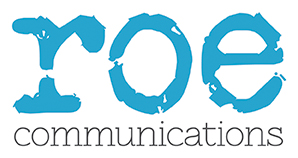Picture this.
The marketing communications team at a business school has identified that it is lacking visibility in the media.
- Journalists rarely ring the school
- Major business education reports exclude it
- Reporters disregard its research and innovation.
The result?
The school struggles to compete due to its lack of public visibility.
Potential students, faculty or corporate partners aren’t aware of its strengths or differences.
Alumni engagement and fundraising are down, as are student enquiries, and research grants are harder to come by.
The Dean and faculty start asking why the school isn’t being noticed.
The marketing communications team knows this and proposes that the school invest in media relations to build its reputation.
Everyone agrees that this is a good idea.
Until the day the team submits a budget request.
Cue sucking teeth, scratching heads and sceptical murmurs.
Media relations: a “nice to have”?
Despite its strategic value, some business schools struggle to justify investment in media outreach.
They see it as a discretionary expense rather than a long-term brand-building strategy.
Unlike easily measurable strategies like social media channels or pay-per-click advertising, the results of media relations seem more opaque.
But what they don’t know yet is that by investing in their media profile, they will make it easier for all their other marketing campaigns to succeed.
Building a persuasive case internally
So how do you go about securing buy-in from decision-makers?
This requires more than an understanding of PR tactics.
Leadership buy-in for media relations investment requires a well-structured argument demonstrating TANGIBLE VALUE.
Ultimately, it means re-framing the problem as an investment rather than a cost.
You should demonstrate value, address concerns, and align media outreach with the school’s goals.
Here is a step-by-step guide for marketing and communications teams to build their case.
1. Identify key decision-makers and their priorities
Business school administrators and decision-makers often prioritise measurable outcomes, financial efficiency, and alignment with institutional strategy.
They prioritise different strategic objectives, such as increasing international visibility, improving rankings and employer reputation, motivating alumni networks or attracting high-calibre students.
Actions:
- Schedule one-on-one meetings with key decision-makers (e.g. Dean, Head of Admissions, Career Services, Faculty Heads) to understand their priorities.
- Ask them questions such as:
- What are our biggest challenges in attracting students/faculty/partners?
- What concerns do you have about investing in media relations?
- How do we want to differentiate ourselves from competitors?
- Identify how media relations can directly support the school’s top priorities so you can frame your case accordingly.
2. Gather data
Marketing communicators must showcase the quantifiable benefits of media relations.
Consider leveraging the following data points: share of voice versus competitors, website traffic and lead generation, faculty citations or alumni engagement.
Use this information to demonstrate the impact of media relations on the school by linking media coverage to key strategic goals, such as internationalisation or student recruitment, positioning media relations as a valuable investment rather than an expense.
Actions: Use tools like Google Analytics to show the direct link between press coverage and website traffic/online enquiries. Show a direct link to student enquiries (see example HERE from the University of Exeter Business School).
Over six months, it was featured in 16 pieces of press coverage in student-facing publications such as the Financial Times, Guardian, Economist and BusinessBecause, with a combined online readership of 59.9 million people. This was a 1,600% increase in press coverage from before the campaign period. Anecdotal evidence from Exeter reported that during the PR campaign period, applications to the Exeter MBA rose by as much as 25%.
3. Present case studies of successful media relations strategies in peer institutions
A compelling way to demonstrate the necessity of media relations is to show decision-makers what other business schools are doing.
This could include tracking how frequently competitor institutions appear in tier-one business publications, highlighting how top schools use media relations to achieve their strategic goals and emphasising the risks of falling behind.
Actions: Audit current media coverage, and compare it to competitor activity. Don’t just look at the amount of coverage, consider the quality. Is it in top-tier media? Is it in-depth rather than just a name mention? Are their spokespeople quoted and is it clear what area of expertise the school is promoting?
4. Build a clear business case and presentation
Decision-makers sometimes view media relations as an additional expense. Reframing it as a long-term strategic investment can change the conversation.
This could include a cost comparison, for example showing how media exposure provides high-value exposure at a fraction of the cost of paid-for campaigns. You could talk about long-term brand equity: how earned media coverage builds lasting credibility. Or you could highlight the ROI for student recruitment, showing how media coverage can make it easier to recruit students.
You could also compare the cost of a media relations campaign to the gain of just one MBA student.
Actions:
- Create a 5-10 slide PowerPoint deck with:
- The current media landscape: where the school stands vs. competitors.
- The opportunity: how strategic media relations can increase visibility, attract students, and strengthen industry partnerships.
- Data-driven insights: metrics from internal audits and competitor comparisons.
- Cost vs. benefit analysis: potential return on investment compared to advertising spend.
- A phased approach: a low-risk, pilot media strategy to test effectiveness before scaling up.
- Schedule a formal presentation with the Dean or leadership team to discuss the findings.
- Anticipate objections and prepare counterarguments (e.g., budget concerns → show the cost-effectiveness of PR vs. paid advertising).
5. Secure a small, test-phase investment
Reduce the perceived risk for decision-makers by suggesting a small, measurable pilot project.
Propose a two-month programme with a clear scope (e.g. hiring a consultant for media outreach, targeting top-tier publications). The project should have a measurable success framework such as securing a certain number of media mentions in high-quality press.
The goal is to prove that media relations will have real value for your business school and ultimately to argue for a longer-term investment.
Actions: set clear, achievable parameters for the proposed project and a way to measure success. Send a follow-up email after the meeting summarising the proposal and next steps.
A structured approach
By taking a structured, step-by-step approach – engaging leadership, presenting data-driven insights, testing strategies, and offering to report results – marketing communications teams can successfully advocate for media relations investment.
This is not just about making noise. It’s about proving that strategic media engagement directly contributes to a business school’s success.


